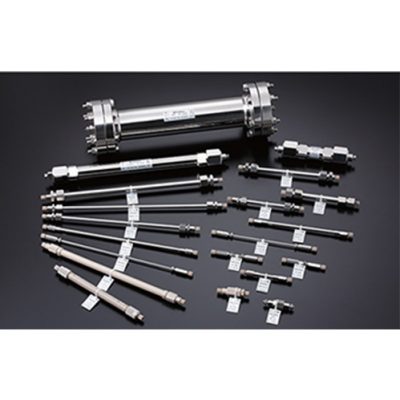Chiral Separation Chromatography (CS)
Separation of optical isomers using chiral selectors. request a quote…
Show 
|
QA-825 DEAE-825 |
|
| ES-502N 7C |
|
| SP-825
CM-825 |
|
| SP-FT 4A |
|
| ES-502C 7C |
|
| P-421S |
|
| YS-50 |
|
| YK-421 |
|
| NI-424
I-524A
|
|
| SI-90 4E
SI-50 4E SI-52 4E
|
|
| SI-35 |
|
| SI-36 4D
SI-37 4D |
|
| Functional group | Particle size (µm) | Base material | Column size (mm) | |
| IEC | carboxyl | 2.7 | Polyvinyl alcohol | 8×75 |
| Quaternary ammonium | 3.5 | Styrene divinylbenzene copolymer | 7.5×100 | |
| 5 | polyhydroxymethacrylate | 4.6×10 | ||
| 6 | silica | 4.6×150 | ||
| 8 | 4.6×125 | |||
| 9 | 4.6×100 | |||
| 12 | 4×250 | |||
| 4×150 | ||||
| 2×50 |
show DATA — DO NOT CHANGE ID–